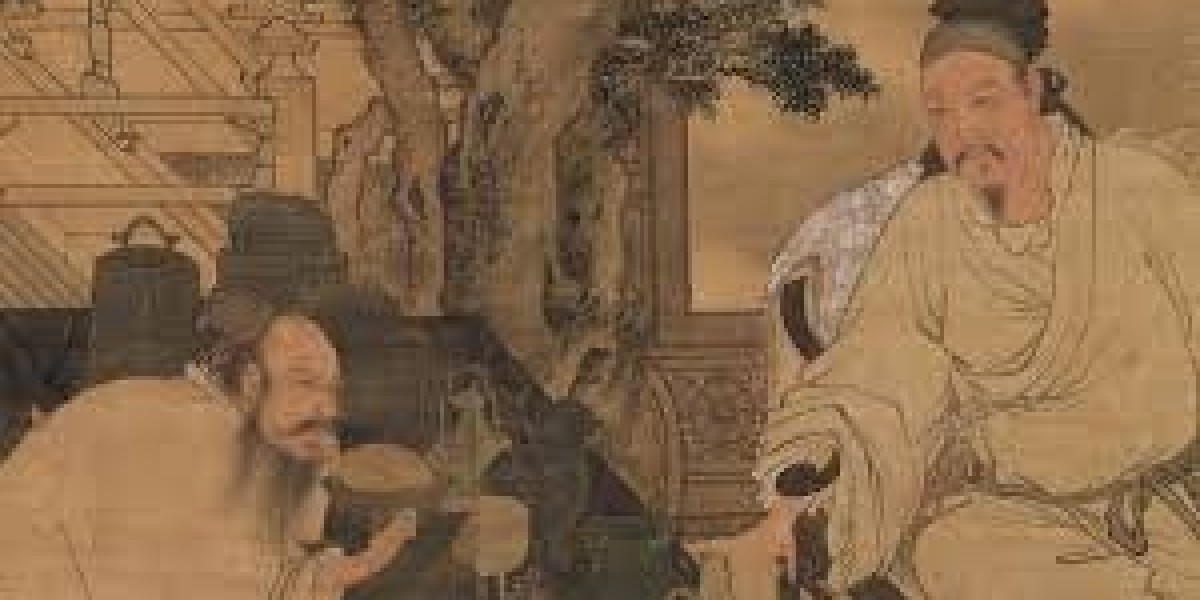Old Chinese art has fascinated people for centuries, with its unique blend of beauty, symbolism, and historical depth. Spanning thousands of years, the evolution of Chinese art reflects the development of Chinese culture, philosophy, and society. From ancient jade carvings to intricate silk paintings, Chinese art offers a rich tapestry of styles, techniques, and themes. But what makes "old Chinese art" stand out in the history of world art, and why is it so revered?
A Glimpse into the Rich History of Old Chinese Art
Old Chinese art has roots that date back to the Neolithic period. Early Chinese artists crafted symbolic representations of the natural world, often using materials like jade, bronze, and ceramics. Over time, these primitive forms developed into sophisticated works of art, influenced by changing dynasties and the philosophical movements that shaped Chinese society.
The earliest known pieces of Chinese art come from the Shang dynasty (1600–1046 BC), where jade and bronze were prominent materials. These works were often designed with religious or ritualistic purposes in mind, reflecting the deep spiritual connection between art and religion in early Chinese culture.
With the advent of the Zhou dynasty (1046–256 BC), the focus of Chinese art began to shift. Artistic expressions during this period grew more refined, with the development of bronze casting techniques reaching new heights. The famous "Ding" vessels, used for sacrificial offerings, are a prime example of the technical prowess of ancient Chinese artisans.
During the Han dynasty (206 BC – 220 AD), old Chinese art began to move beyond ritual and ceremonial functions. The Han period marked a flourishing of artistic creativity, including tomb murals, silk paintings, and pottery. These art forms began to reflect daily life, providing valuable insight into the culture and practices of ancient China.
The Influence of Chinese Philosophy on Art
One of the key factors that make "old Chinese art" stand out is its connection to Chinese philosophy, particularly Confucianism, Taoism, and Buddhism. These philosophies shaped how artists approached their work, providing a framework through which they could express their beliefs and worldview.
Confucianism, with its emphasis on order, morality, and social harmony, greatly influenced Chinese art. Artists created works that reflected these ideals, such as scenes of filial piety or depictions of moral virtues. Confucian thought also encouraged the pursuit of knowledge, and as a result, many artists sought to represent the natural world in a way that demonstrated their understanding of it.
Taoism, with its focus on balance, harmony, and the connection between humanity and nature, had a profound impact on Chinese landscape painting. Taoist artists often sought to capture the essence of nature, emphasizing simplicity, spontaneity, and the fleeting nature of life. The famous "mountain-and-water" paintings, which depict serene landscapes with towering mountains and flowing rivers, are a hallmark of Taoist influence on old Chinese art.
Buddhism, which arrived in China around the 1st century AD, also had a lasting effect on Chinese art. Buddhist art often focused on the spiritual realm, with intricate depictions of the Buddha and various deities. These works were intended to inspire meditation and reflection, offering a visual representation of the path to enlightenment.
The Unique Techniques and Materials of Old Chinese Art
The materials used in old Chinese art are just as significant as the artistic techniques themselves. Over the centuries, Chinese artisans developed a wide range of specialized techniques, many of which remain iconic today.
One of the most revered materials in old Chinese art is jade. Known for its durability and beauty, jade was often used to create ceremonial objects, such as ritual vessels, ornaments, and burial items. The intricate carvings in jade were often imbued with symbolic meanings, representing everything from good fortune to immortality.
Ceramics, too, played a crucial role in the development of old Chinese art. The Tang dynasty (618–907 AD) saw the rise of the famous Tang sancai glaze, a multicolored glaze used on figurines and pottery. The Song dynasty (960–1279 AD) brought about the refinement of porcelain, with works such as blue-and-white porcelain becoming highly prized both within China and abroad.
Chinese painting is another major aspect of old Chinese art. Early Chinese paintings were often done on silk or paper, using ink and brushes. The art of Chinese painting developed alongside calligraphy, and the two were often combined in a single work. Landscape painting became a prominent genre, with artists seeking to express their connection to nature through brushwork and composition. The intricate details in these paintings, such as the delicate rendering of mountains, trees, and water, showcase the artist’s skill and understanding of the natural world.
Old Chinese Art’s Global Influence
Old Chinese art's influence on the world is undeniable. Throughout history, Chinese art has traveled beyond the borders of China, captivating artists and collectors worldwide. The Silk Road played a significant role in this exchange, facilitating the spread of Chinese art to places like Central Asia, India, and the Middle East.
During the Tang dynasty, Chinese art had a significant impact on the art of Japan, Korea, and Southeast Asia. The exchange of artistic ideas helped shape the development of these regions' unique artistic traditions. In the West, European artists in the 17th and 18th centuries were deeply influenced by Chinese porcelain and lacquerware, which were highly sought after.
In the modern era, Chinese art continues to inspire contemporary artists around the world. The traditional techniques of old Chinese art, such as calligraphy, ink painting, and porcelain making, remain integral to the study of art today. Many modern artists incorporate elements of traditional Chinese art into their own work, bridging the gap between the ancient and the modern.
Final Thoughts:
Old Chinese art is more than just a collection of beautiful objects; it is a window into the soul of an ancient civilization. The intricate techniques, profound philosophical influences, and stunning materials used in old Chinese art have left an indelible mark on the world. Whether through its spiritual depth, its portrayal of nature, or its mastery of materials, old Chinese art continues to captivate and inspire people around the globe.
Understanding the significance of old Chinese art is not just about appreciating the craftsmanship; it is about connecting with the history and culture that produced these masterpieces. As we look back at these ancient works, we gain insight into the values, beliefs, and artistic innovations that have shaped China’s rich cultural heritage.
Today, old Chinese art continues to be a source of inspiration and admiration, preserving the legacy of a civilization that has left a lasting impact on the world’s artistic landscape. Its beauty and significance remain as relevant today as they were centuries ago.


